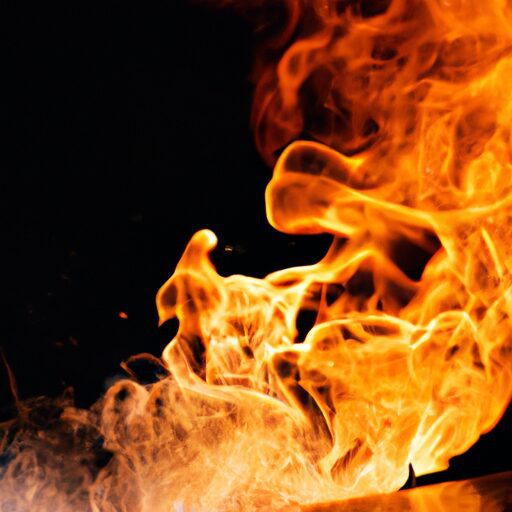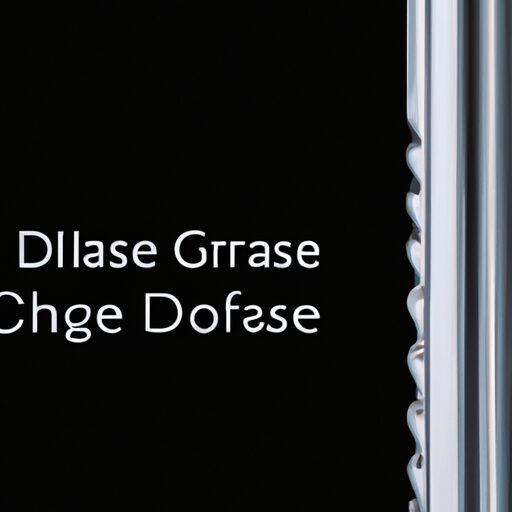How Flammable Is Hydraulic Fluid
Hydraulic fluid, a critical component in hydraulic systems, plays a crucial role in transmitting power and facilitating the operation of heavy machinery. However, its flammability poses a potential risk that demands careful consideration. Understanding the flammability characteristics of hydraulic fluid is essential for ensuring safety and preventing catastrophic accidents. This article aims to explore the extent to which hydraulic fluid is flammable by examining its composition, analyzing flammability ratings and testing methods, and identifying factors that influence its flammability properties. Additionally, potential fire hazards associated with hydraulic fluid will be discussed along with relevant safety precautions. The article will also delve into industry standards and regulations governing the handling and storage of hydraulic fluids. By reviewing case studies on past hydraulic fluid fires and accidents, valuable insights can be gained to enhance our understanding of this critical issue. Ultimately, this knowledge will enable individuals working with hydraulic systems to better assess risks and implement appropriate preventive measures for a safer working environment.
Understanding the Composition of Hydraulic Fluid
The composition of hydraulic fluid plays a crucial role in determining its flammability properties. Understanding the composition analysis of hydraulic fluid is essential for assessing its potential environmental impact and safety considerations. Hydraulic fluids are typically comprised of a base oil, various additives, and potentially water. The base oil serves as the primary component, providing lubrication and heat transfer capabilities. Additives are incorporated to enhance specific performance characteristics such as anti-wear, corrosion inhibition, and oxidative stability. It is important to note that different types of base oils can be used in hydraulic fluids, including mineral oils, synthetic oils, or vegetable-based oils. Each type has its own advantages and disadvantages in terms of cost-effectiveness, performance under extreme conditions, and environmental friendliness.
When analyzing the composition of hydraulic fluid, it is necessary to consider potential contaminants or impurities that may affect its flammability properties. These impurities can originate from sources such as manufacturing processes or external contamination during use. In particular, water content needs to be carefully monitored since excessive amounts can significantly reduce the flash point and increase the likelihood of combustion.
Transitioning into the subsequent section about flammability ratings and testing methods allows for further exploration into understanding how these factors influence the overall flammability characteristics of hydraulic fluid without repeating information already presented.
Flammability Ratings and Testing Methods
One can appreciate the exhilaration of witnessing the combustion propensity of hydraulic fluid as it undergoes rigorous flammability testing, revealing its true nature. Flammability testing is crucial in determining how susceptible a hydraulic fluid is to catching fire and sustaining combustion. These tests are essential for ensuring the safety of hydraulic systems operating in various industries.
There are different methods used to assess the flammability of hydraulic fluids, including open cup and closed cup tests. Open cup tests involve exposing a sample of the fluid to an open flame and observing its ignition characteristics. Closed cup tests, on the other hand, measure the minimum temperature at which vapors from the fluid ignite when exposed to an ignition source.
Flammability testing allows engineers and researchers to categorize hydraulic fluids based on their flash points, autoignition temperatures, and flammable limits. Flash point refers to the lowest temperature at which a fluid gives off sufficient vapor to ignite momentarily when introduced to an ignition source. Autoignition temperature is the minimum temperature required for a substance to ignite spontaneously without an external flame or spark.
These flammability ratings obtained through testing help determine appropriate safety measures that need to be implemented when using specific types of hydraulic fluids. Understanding these ratings enables operators and maintenance personnel to take necessary precautions while handling or working with these potentially hazardous substances.
Transitioning into factors affecting the flammability of hydraulic fluid, it is important first to consider its chemical composition and physical properties.
Factors Affecting the Flammability of Hydraulic Fluid
This discussion will focus on two key factors that affect the flammability of hydraulic fluid: flashpoint and ignition temperature, and vapor pressure and volatility. The flashpoint refers to the lowest temperature at which hydraulic fluid can produce enough vapors to ignite when exposed to an open flame or spark. Ignition temperature, on the other hand, is the minimum temperature required for hydraulic fluid to sustain combustion once it has been ignited. Additionally, vapor pressure and volatility play a crucial role in determining how easily hydraulic fluid evaporates into a gaseous state, making it more prone to igniting.
Flashpoint and Ignition Temperature
Flashpoint and ignition temperature are key factors in determining the level of flammability exhibited by hydraulic fluid, stirring concerns regarding potential fire hazards. Flashpoint testing is conducted to determine the lowest temperature at which hydraulic fluid emits vapors that can ignite when exposed to an external flame or spark. It serves as an indicator of the ease with which a fluid can catch fire. Ignition temperature analysis, on the other hand, involves determining the minimum temperature required for sustained combustion once ignition has occurred. This parameter indicates how easily a hydraulic fluid will continue to burn once ignited. Understanding both flashpoint and ignition temperature is crucial in assessing the overall flammability risk associated with using hydraulic fluids.
To further explore this topic, we will now delve into vapor pressure and volatility, which play significant roles in understanding the behavior of hydraulic fluids during operation and potential fire incidents without writing ‘step’.
Vapor Pressure and Volatility
Vapor pressure and volatility serve as essential parameters for understanding the behavior of substances under various operating conditions, allowing for a comprehensive assessment of their potential risks in relation to fire incidents. In the case of hydraulic fluids, vapor pressure measurement plays a crucial role in determining their flammability classification. Vapor pressure refers to the pressure exerted by a substance’s vapor when it is in equilibrium with its liquid phase at a certain temperature. A high vapor pressure indicates that the substance is more volatile and prone to evaporate readily, increasing the likelihood of fire hazards. By measuring vapor pressure, hydraulic fluids can be categorized based on their flammability characteristics, enabling professionals to select appropriate safety measures and prevent potential accidents. Understanding these properties helps inform decisions regarding storage, handling, and transportation of hydraulic fluids to minimize fire risks.
Transitioning into the subsequent section about ‘potential fire hazards and safety precautions,’ it becomes crucial to explore additional factors that contribute to the overall flammability profile of hydraulic fluids.
Potential Fire Hazards and Safety Precautions
One important consideration when evaluating the flammability of hydraulic fluid is to assess its potential fire hazards and implement appropriate safety precautions. An interesting statistic to note is that according to a study conducted by the National Fire Protection Association, hydraulic fluid was found to be the ignition source in 7% of all reported industrial fires. This highlights the need for effective fire prevention measures and emergency response protocols in industries where hydraulic systems are utilized.
To prevent fires caused by hydraulic fluid, it is crucial to have proper maintenance procedures in place. Regular inspection of hydraulic systems can identify potential leaks or faulty components that could lead to fluid ignition. Employing fire-resistant fluids with high flash points can significantly reduce the risk of ignition. Additionally, implementing strategies such as proper storage, separation from ignition sources, and adequate ventilation can further minimize fire hazards.
In case a fire does occur, having an efficient emergency response plan becomes essential. This includes training employees on firefighting techniques specific to hydraulic fluid fires and providing them with appropriate firefighting equipment. Rapidly isolating affected areas, activating fire suppression systems, and alerting emergency services are vital steps in mitigating the damage caused by such incidents.
Moving forward into industry standards and regulations, it is imperative for organizations to adhere to established guidelines that govern the safe handling and storage of hydraulic fluids.
Industry Standards and Regulations
This paragraph will discuss the industry standards and regulations related to fire safety in hydraulic systems. One important standard is NFPA 410, which provides guidelines for the safe operation and maintenance of aircraft fuel servicing equipment. Compliance with this standard helps ensure that all necessary safety precautions are taken to prevent fires caused by hydraulic fluid. In addition to NFPA 410, there are other safety guidelines, compliance requirements, and best practices that should be followed to minimize the risk of fire hazards in hydraulic systems. These include regular inspections, proper training of personnel, and implementing appropriate fire suppression measures. Overall, adhering to industry standards and regulations is crucial for maintaining a safe working environment when dealing with flammable substances like hydraulic fluid.
NFPA 410 and other Safety Guidelines
NFPA 410, along with other safety guidelines, provides comprehensive information on the flammability characteristics of hydraulic fluid. Understanding these characteristics is crucial for conducting a thorough risk assessment and implementing appropriate flame retardants to minimize the potential for fires. The guidelines outline factors that contribute to the flammability of hydraulic fluids, such as flash point, autoignition temperature, and fire point. Flash point refers to the minimum temperature at which vapors from the fluid can ignite when exposed to an open flame or spark. Autoignition temperature is the lowest temperature at which the fluid can spontaneously ignite without an external ignition source. Fire point indicates the temperature at which sustained combustion occurs once ignited. By considering these parameters, industries can evaluate and select suitable flame retardants and design safer systems accordingly. Compliance with NFPA 410 and adherence to best practices in handling hydraulic fluids are essential for ensuring workplace safety and preventing accidents caused by flammable fluids.
Compliance and Best Practices
Compliance with safety guidelines and best practices is crucial to minimize the risk of hydraulic fluid fires. However, ensuring compliance can pose challenges for organizations due to the complexity of regulations and the need for continuous monitoring and assessment. One major challenge is conducting a comprehensive risk assessment to identify potential ignition sources and implement appropriate control measures. This involves analyzing various factors such as equipment design, maintenance procedures, storage conditions, and training protocols. Moreover, organizations must stay updated with evolving standards and industry trends to adapt their safety protocols accordingly. By addressing these compliance challenges head-on, organizations can effectively mitigate the risks associated with hydraulic fluid flammability. In the next section on case studies: hydraulic fluid fires and accidents, we will delve into real-life incidents that highlight the importance of adherence to safety guidelines in preventing catastrophic events.
Case Studies: Hydraulic Fluid Fires and Accidents
This discussion will focus on the lessons learned and preventive measures from case studies of hydraulic fluid fires and accidents, as well as the impact on personnel and equipment. By analyzing these incidents, valuable insights can be gained to enhance safety protocols and minimize risks in the future. The examination will delve into the specific causes of these incidents, identifying areas where improvements can be made in terms of design, maintenance, training, and emergency response procedures.
Lessons Learned and Preventive Measures
To enhance safety and minimize the risk of fire incidents, it is crucial to analyze and understand the flammability characteristics of hydraulic fluids. Lessons learned from past hydraulic fluid fires and accidents have provided valuable insights into preventive measures that can be implemented. One important lesson is the significance of regular maintenance and inspection of hydraulic systems to identify potential issues before they escalate into fire incidents. This includes checking for leaks, ensuring proper storage conditions, and conducting routine equipment testing. Additionally, implementing stringent safety protocols such as installing fire suppression systems, providing adequate training to personnel handling hydraulic fluids, and using flame-resistant materials in hydraulic systems can greatly reduce the risk of fires. By adopting these preventive measures, the impact on personnel and equipment can be significantly minimized without compromising operational efficiency or productivity.
Impact on Personnel and Equipment
One critical aspect to consider is the potential consequences that fire incidents involving hydraulic fluids can have on both personnel and equipment.
-
Impact on Personnel: Fire incidents can result in severe injuries or even fatalities for personnel working with or around hydraulic systems. The intense heat generated during a fire can cause burns, respiratory problems due to smoke inhalation, and other life-threatening injuries. Additionally, the toxic fumes released by burning hydraulic fluids can further endanger the health of personnel.
-
Impact on Equipment: Hydraulic fluid fires can cause significant damage to equipment and machinery. The high temperatures reached during a fire can melt or deform components, leading to mechanical failures and rendering the equipment inoperable. In addition, the corrosive nature of burning hydraulic fluids can corrode metal surfaces, further compromising their structural integrity.
Considering these potential impacts on both personnel and equipment highlights the importance of understanding the risks associated with flammable hydraulic fluids and taking appropriate precautions to prevent fire incidents.
Conclusion: Understanding the Risks and Taking Precautions
In order to fully comprehend the potential hazards and ensure safety measures are in place, it is essential to grasp the level of flammability exhibited by hydraulic fluid. Understanding the risks associated with hydraulic fluid flammability is crucial for maintaining a safe working environment.
Hydraulic fluids have varying degrees of flammability depending on their composition. Most hydraulic fluids are classified as combustible liquids due to their flash points, which refer to the lowest temperature at which they can produce enough vapor to ignite when exposed to an open flame or spark. Flash points typically range from 140°F (60°C) to 500°F (260°C).
It is important to note that although hydraulic fluids may not be highly flammable, they can still pose significant fire hazards under certain conditions. Factors such as high pressure, leaks or spills, and contact with hot surfaces can increase the risk of ignition. In addition, hydraulic systems often operate in close proximity to other heat sources or ignition points.
To mitigate these risks, proper safety measures should be implemented. This includes regular maintenance and inspection of hydraulic systems, ensuring proper storage and handling procedures are followed, and providing adequate ventilation in areas where hydraulic equipment is used. Fire extinguishing equipment should also be readily available.
By understanding the risks associated with hydraulic fluid flammability and taking appropriate precautions, personnel can work safely with this potentially hazardous substance while minimizing the likelihood of fires or accidents occurring.
Frequently Asked Questions
How does the composition of hydraulic fluid affect its flammability?
The composition of hydraulic fluid significantly impacts its flammability. Flammability testing evaluates how different compositions affect ignition and combustion, providing insight into the fire hazards associated with various hydraulic fluids.
Are there any specific industry standards or regulations that govern the use of hydraulic fluid?
Industry regulations and hydraulic fluid standards are established to ensure safe and efficient use. These guidelines address factors such as composition, performance, labeling, storage, and disposal requirements to minimize risks and maintain operational integrity in various industries.
Can hydraulic fluid fires lead to accidents or other hazardous situations?
Hydraulic fluid fires can lead to accidents and hazardous situations in the workplace. Understanding the causes and implementing preventive measures is crucial for maintaining workplace safety and preventing potential risks associated with hydraulic fluid fires.
What are some safety precautions that should be taken to prevent hydraulic fluid fires?
To prevent hydraulic fluid fires, several safety measures should be implemented for fire prevention. These include regular maintenance and inspection of hydraulic systems, ensuring proper storage and handling procedures, using fire-resistant hydraulic fluids, and providing adequate training to personnel.
Are there any case studies or examples of accidents or fires caused by hydraulic fluid?
Accidents caused by hydraulic fluid include fires resulting from ignition sources such as sparks, high temperatures or electrical malfunctions. The flammability of hydraulic fluid depends on its composition and can vary, with some fluids being more flammable than others.
Conclusion
In conclusion, hydraulic fluid, like a hidden ember within the machinery, possesses a potential for ignition and fire. Its flammability is influenced by its composition, testing methods, and external factors. Understanding these risks is crucial in order to implement necessary safety precautions and adhere to industry standards and regulations. Through case studies of past accidents and fires caused by hydraulic fluid, we comprehend the devastating consequences that can arise if proper measures are not taken. Let us not underestimate the power of this seemingly innocuous liquid; let us instead embrace knowledge to prevent future disasters.







